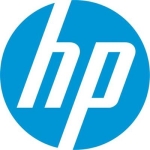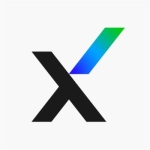What is our primary use case?
Officially, I'm an MSP, but I also host it for our own internal software. I've got XDR installed on 26,000 devices. It is used for threat prevention, policy enforcement, firewall rules, and DLP. We use it for pretty much everything. Our firewalls also integrate with XDR.
We use XDR Pro. It is in the cloud, and we have got version 7 at the moment, which is probably the latest update of it.
How has it helped my organization?
The key thing is the visibility of what's going on in our networks and on our end devices. It gives us visibility.
It provides the ability to query. I can query for any file or any IOC on any of the devices installed, and it will search for a data link.
What is most valuable?
The live terminal is probably the best thing ever. It gives you the access to get straight onto any machine.
In general, it has been able to see every single threat that has ever come up and it helps us stop it.
I've used it for a great many years now, and it worked really well. From the Palo Alto side, whatever they buy, they integrate that really well into their integration suite, and that makes a massive difference.
What needs improvement?
The onboarding process could be better.
It tends to do 99.9% of things. The only thing I'd like is single sign-on authentication into their cloud platform so that my users can be properly authenticated against it.
What do I think about the stability of the solution?
Its stability is very good.
What do I think about the scalability of the solution?
Its scalability is very good. It is on my servers as well as my end users. I've got five and a half thousand end-users plugged in, and they're all on, and then I have 26,000 servers on it as well.
How are customer service and support?
I would rate them a 9 out of 10. The only reason why they lose a point is that if I escalate, it gets done really quickly. I've got all the various contacts I could ever need inside Palo Alto, but some of my other colleagues don't have that same level of contact. So, if I'm doing it, it is rapid, but if they're doing it, it is slower.
How would you rate customer service and support?
Which solution did I use previously and why did I switch?
I've worked with Carbon Black, which Cortex XDR beats hands down. The reason it beats it hands down is because of the ability to query. I couldn't do that with Carbon Black. For me, that was a genuine issue with Carbon Black. That was one of the main reasons why we've literally moved 22,000 devices off Carbon Black into Cortex XDR.
We also use Sophos, McAfee, and BitDefender. As a group, we buy multiple companies a year. So, we come across most of them.
If it is my own device, I would love to have Cortex, but I can't buy one license. I have to buy a minimum of 250 licenses. So, I normally go for something like BitDefender because it has the least amount of bloatware.
How was the initial setup?
It is straightforward. It is pretty much out of the box. It works how you want it to work. So, you can't really ask for more.
It is also easy to maintain.
What about the implementation team?
It was implemented in-house.
What was our ROI?
In the company I'm in, we make software. On that basis, we've gone for what we need to make sure our software and all of our customer data are secure. That drives us more than the ROI. It may sound a little weird, but it is the way we run because, for us, the ROI is almost pointless if we lose all our data.
What's my experience with pricing, setup cost, and licensing?
I have the full Pro Prevent license. So, I've got post analytics, forensics, and the whole lot of it.
What other advice do I have?
My advice to others who would like to start working with Cortex is to not dip your toe in the water. Go big or go home. If you integrate everything in, you'll get fantastic results. You shouldn't do some bits here and there. You need to use their ecosystem as a whole. If you're in their entire ecosystem, the results are amazing.
I would rate it a 10 out of 10.
Disclosure: My company does not have a business relationship with this vendor other than being a customer.




















